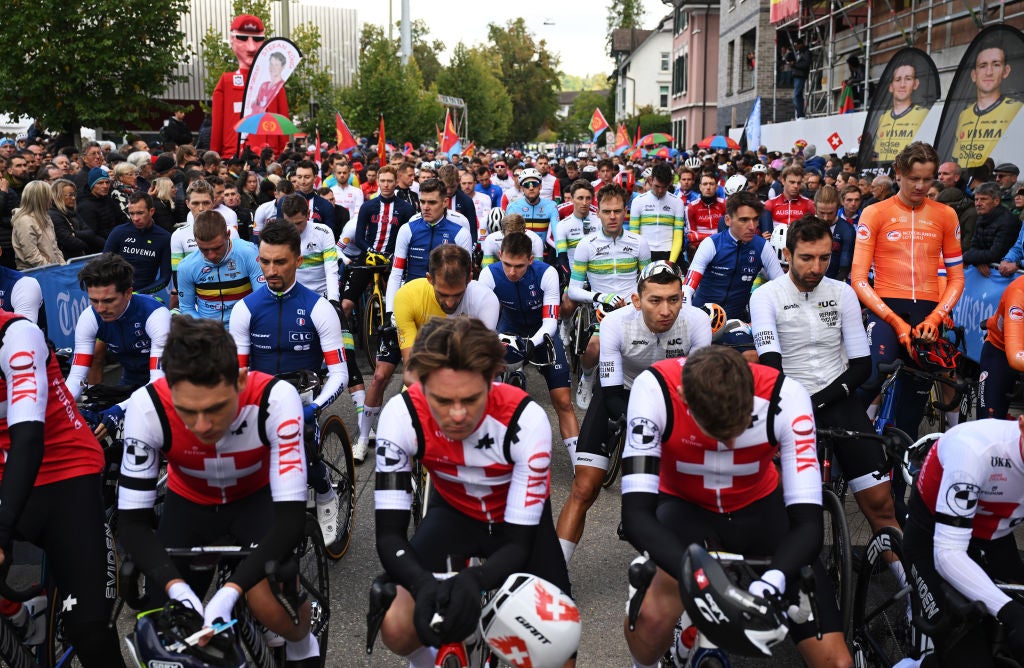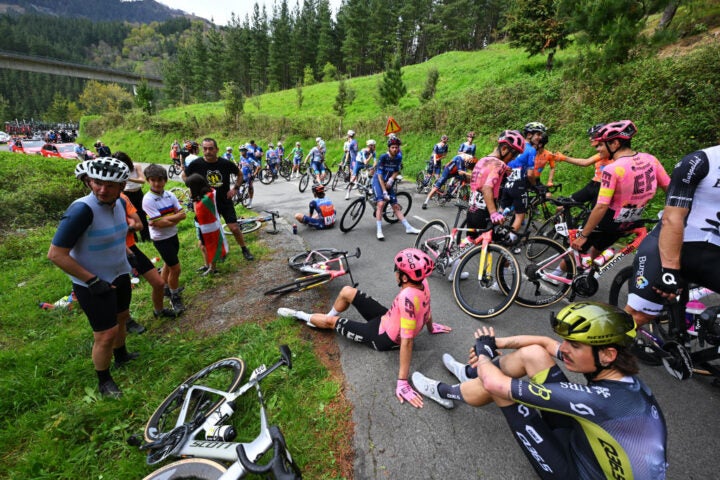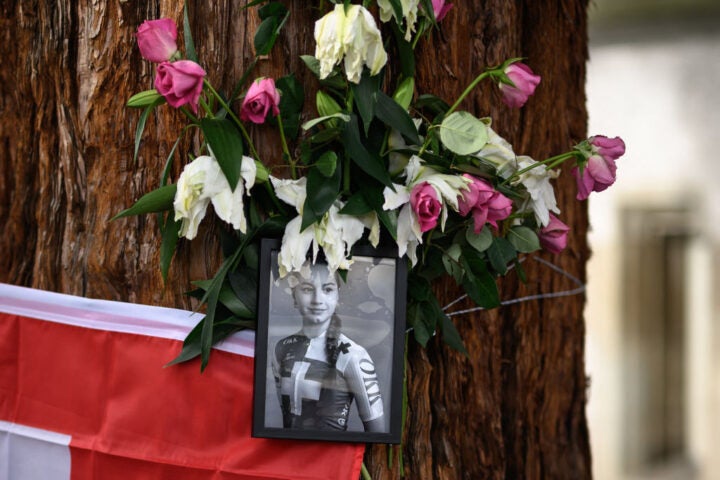
Opinion: How Many More Tragedies Before Cycling Truly Tackles Safety Crisis?
“], “filter”: { “nextExceptions”: “img, blockquote, div”, “nextContainsExceptions”: “img, blockquote, a.btn, a.o-button”} }”>
Get a free Giordana cycling jersey when you subscribe to Velo with Outside+! It’s our way of celebrating the 2024 Road World Championships in Zurich. Includes free shipping. Hurry, ends Sept. 29.
>”,”name”:”in-content-cta”,”type”:”link”}}”>Join now.
If the UCI had hoped that the polemics over race safety fueled by the awful loss of Muriel Furrer, the 18-year-old Swiss rider who died from a crash in the junior women’s race at the 2024 world championships, would begin to ease down, everyone inside cycling’s governing body is mistaken.
The old excuses — cycling is dangerous, the riders take too many risks, you can’t protect the whole route — no longer cut it. The death toll, at the highest and wealthiest level of the sport, has now become unacceptable.
Memories are short in cycling. After all, it is only a few months since the notorious crash in the Tour of the Basque Country that left Jonas Vingegaard in intensive care and sparked a similar debate.
After that life-threatening incident, Markus Laerum, the CEO of Safe Cycling, which creates signage and warning systems for major bike races, told Sporza that the Basque organizers had been contacted about the dangers of that descent, but that “we never received an answer from them.”
In fact, Vingegaard himself had raised concerns well in advance.
“One of our discussion partners at the time was Jonas,” Laerum explained, “and he had already warned us about that specific descent six months earlier.”
The truth is that the Basque Country crash could have been far worse than it was.
And not for the first time in recent years, the sport got away with it.
Is it time for cycling to have its F1-style safety makeover?

Furrer’s death remains subject to a police investigation but it clearly encapsulated all the elements that now make cycling so dangerous: high speeds due to improved aerodynamics and technology, old-school course design lacking protection at key points, confused in-race communications and scant knowledge of rider locations, compounded by a belated emergency response.
All of the above traits used to apply to Formula 1 motor racing. A macho culture accepted that the occasional fatality was inevitable. But after a black weekend in May 1994, in which Roland Ratzenberger and Ayrton Senna were both killed, there was a radical shift in thinking.
Later, Senna’s former teammate Gerhard Berger said: “We had got lucky for a while. That shook the (governing body) FIA, the teams, the drivers. After this, everybody joined forces together with the FIA in the lead and it came to a very good result.”
Elite cycling often aspires to be compared to F1 motor racing, but in terms of safety measures, it is light years behind.
After the black weekend at Imola in 1994, motor sport had an epiphany, and worked hard to improve its safety record.
There are parallels in the development of both sports. In motor racing, as in cycling, technology, incentivization and athlete skill and expertise all combined to make racing much faster and more risk-laden.
Professional bike racing, though, due to its lack of protection for the participants and the volatility of racing on the open road, is even more dangerous than motorsport. Stage races, particularly, are a health and safety nightmare.
How much has truly changed in cycling?

While F1 racing has made huge strides in safety since Senna’s death some 30 years ago, it’s reasonable to ask how much has changed in cycling.
That’s because tragically, the fatalities keep happening.
From Fabio Casartelli in 1995 to Wouter Weylandt in 2011, from Gino Mäder in June last year, to André Drege, just three months ago. And now Furrer, dead at 18, in the most horrendous of circumstances.
But are we just to accept the occasional fatality as inevitable? Are the riders and their families supposed to accept this level of risk?
Are we, the consumers of cycling, all supposed to think that, in the case of Furrer, there was nothing more — nothing at all — that could have been done ?
The finger-pointing currently going on in the aftermath of Furrer’s death will not solve the problem. The key question is first, could the crash have been prevented or at least, mitigated, and secondly, could her young life have been saved through better course design and greater use of in-race technology.
An investigation into her death that will explore all of these issues, is ongoing, but pause and ask yourself this: how, during the UCI world championships, can a rider simply disappear for an estimated 90 minutes, mid-race, and not be missed?
Time to shake free of cycling’s traditions

Yet there still remains a cultural resistance to fully implementing all the available measures in safety.
The purists long resisted helmet use, just as they still resist race radios for outdated reasons, even though, as racing gets more dangerous, radios are an essential safety tool. GPS tracking is sometimes used, but limited in its implementation; the arguments for both being absent from races have now been completely overtaken by events.
Then there is the old school thinking, still voiced, that, because cycling is dangerous, we must tacitly accept the occasional tragedy.
Crashes are part of the sport, we are told, which while true, does not mean that regular fatalities have to be accepted. It is an argument too, that lets too many race organizers off the hook. This culture must end.
Speaking after Furrer’s death, UCI president David Lappartient aligned himself with that way of thinking, repeating his “50 percent of crashes happen because of bad behavior” line during a press conference. That comment has already riled many leading riders this season, including Geraint Thomas of Ineos Grenadiers.
“Lappartient needs to focus more on the 50 percent that he can affect,” Thomas said earlier this year. “That means 50 percent is still down to him and organizers to do everything they can.”
Lappartient had also said that “we are not in a football stadium, something closed, where the risk is really limited. We are on open roads.”
This is not true. While the UCI world championships, supposedly the blue riband event in one day racing, are — like WorldTour races — on public roads, they take place in a protected environment, on closed roads, and are subject to agreed safety measures.
And when it comes to reckless riding — Lappartient’s “bad behavior” — the UCI declined to sanction Matthieu van der Poel for endangering spectators, himself — and potentially other riders — by jumping onto the pavement during the men’s road race.
Remember Filip Maciejuk?
He jumped across the gutter and back into the peloton in the 2023 Tour of Flanders, causing a mass pile-up. The UCI disqualified him and also issued him with a 30-day-ban.
“It is strictly prohibited for riders to use sidewalks, lanes or cycle paths that do not form part of the course,” the UCI said.
Why no sanction for Van der Poel then? Talk about mixed messaging.
Past-due for real change

“You don’t ride a bike to die,” David Lappartient said in Zürich.
On that point, he’s obviously correct. But he also needs to confront that fact that it keeps happening.
In the aftermath of Mäder’s death, the UCI assembled the SafeR initiative in 2023, with participation from riders, race organizers and teams. Several rule changes were brought in and safety measures tightened, with more signage, padding, and even “yellow cards” being brandished for risky behavior.
However, according to procyclingstats.com, the 2024 season already has the highest number of significant injuries — 298 — since records started a decade ago, and, after SafeR CEO Jaap Van Hulten was ousted by fellow stakeholders in the spring, some say the group’s become overly politicized and is not doing enough.
It’s now at the door of every promoter, every race organizer, every governing body, making money from the sport, to acknowledge that current prevention and safety measures have failed.
The sport is getting faster and more dangerous every year. Some of the issues are practical, some financial, while others are cultural.
But serial safety failures now oblige all race organizers to collaborate fully with the teams and riders, to agree heightened safety criteria, to minimize the prospect of further fatalities.
If that means that some races are lost because they are unable to commit to those new criteria, then so be it.



